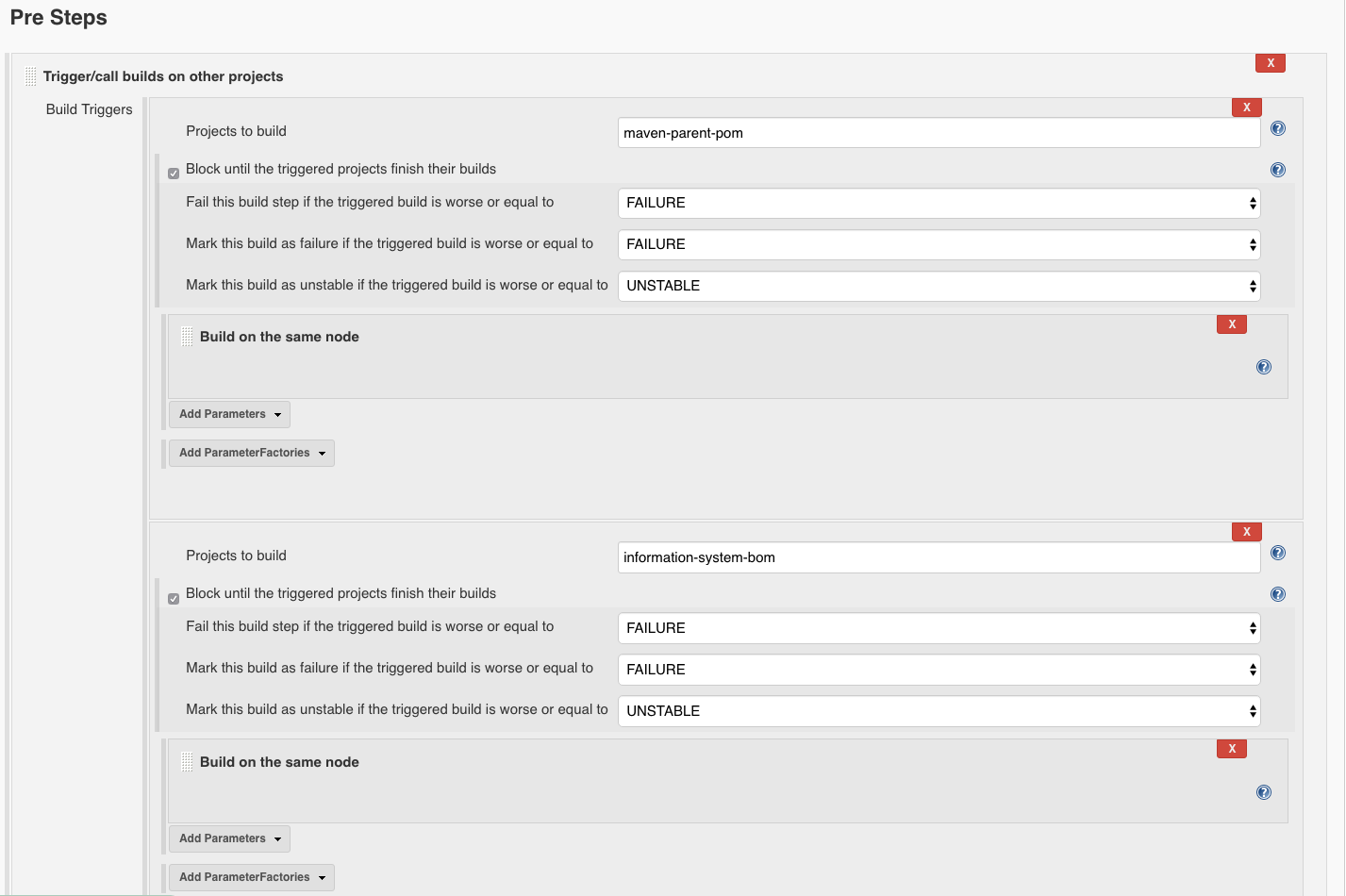Difference between revisions of "Connecting projects downstream/upstream"
Manuele.simi (Talk | contribs) (→Example) |
Manuele.simi (Talk | contribs) (→Example) |
||
| Line 15: | Line 15: | ||
Upstream Job -> Actual Job -> Downstream Job | Upstream Job -> Actual Job -> Downstream Job | ||
| − | = Example = | + | == Example == |
The following figure shows 2 upstream projects connected to the current project: | The following figure shows 2 upstream projects connected to the current project: | ||
Revision as of 17:13, 7 June 2019
Upstream project
A project can have one or several upstream projects, which means that a build for the current project may be scheduled when an upstream build is finished. Per default every stable upstream build will schedule a build in the downstream project, but there are several options and plugins which can customize this behaviour.
Downstream project
A project can have one or several downstream projects. The current project is then known as an upstream project of the downstream project. See Upstream project for what this means regarding scheduling of builds.
Job Triggers
The upstream job is the one that is triggered before the actual job is triggered. The downstream job is the one that is triggered after the actual job is triggered. We can configure the actual job not to be triggered if the upstream job is failed. In the same way, we can configure the downstream job not to be triggered if the actual job is failed.
Order of job triggers:
Upstream Job -> Actual Job -> Downstream Job
Example
The following figure shows 2 upstream projects connected to the current project:
In this case, these 2 jobs will be executed before executing the Build step of the current project's job.
